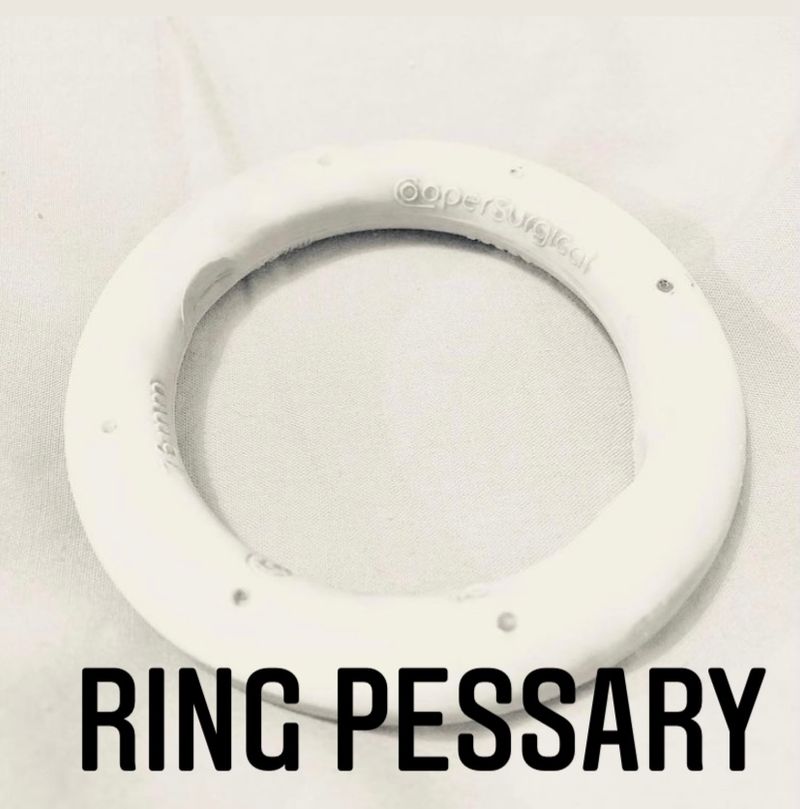Pelvic Floor Problems 101
Updated May 2024
It's estimated that more than one in three women have pelvic floor problems of some sort. That's 10 million of us in the UK alone and, let's be honest, it's probably more, because so many don't report it. In fact, a recent survey by the Royal College of Obstetricians and Gynaecologists suggested that a whopping 60% of UK women have symptoms of poor pelvic health. So what does it all mean?
I knew virtually nothing about my pelvic floor before I had children. And I didn’t find it easy to find good information afterwards. So in Episode 2 of the Why Mums Don’t Jump podcast I sat down with the Women’s Health physio, Katie Syrett, to blast through some basics.
Here’s your beginner’s guide to pelvic floor dysfunction:
What is a pelvic floor?
Your pelvic floor is a group of muscles and tissues that form a sort of hammock at the base of your pelvis. Among other things, they help to support the pelvic organs (like your bladder, bowel and uterus); they help keep you continent by controlling the openings to the bladder and bowel; and they're important for sexual function.
And yes, men have a pelvic floor too.
What can go wrong?
Pelvic floor dysfunction can happen when the pelvic floor muscles get damaged, weakened, overstretched or become too tight.
Pregnancy and childbirth is a common cause, but it can also happen when your hormones change around menopause or sometimes for other reasons like if you're overweight or have chronic constipation.
Some conditions like hypermobility can also cause issues.
Common problems
When the pelvic floor is not working as it should, it has a knock on effect. Sometimes more than one. Most commonly:
- Incontinence is when you leak wee or poo. Stress incontinence happens when you put pressure on your pelvic floor eg coughing, sneezing or jumping. Urge incontinence is when you need to go too often and can’t hold on.
- Pelvic Organ Prolapse is when one (or more) of your pelvic organs shifts out of place and pushes into the vaginal wall. If it happens at the front you might hear it described as anterior or cystocele. At the back it’s posterior or rectocele. A uterine prolapse is when your uterus (womb) descends.
- Pelvic Pain - this can happen for lots of reasons, but is sometimes due to the pelvic floor muscles become hypertonic (too tight) and unable to relax. It can lead to pain in the pelvic area, constipation and painful sex.
How is it treated?
There are a range of different ways to treat or manage pelvic floor dysfunction including:
- Pelvic Floor Exercises (aka Kegels)
- Physiotherapy
- Pessaries (medical devices that are inserted in the vagina for support. They sound scary but they’re not!)
- Surgery
If you’re in the UK, your first port of call would be your GP who can refer you to physio and/or to a urogynaecologist/colorectal or other specialist if necessary.
Or you could seek out a private physio (look for pelvic health or women’s health).
There’s a directory here: https://www.squeezyapp.com/directory/
Can it be fixed? (I Googled this a LOT)
This depends on a lot of different factors and also what you mean by ‘fixed’.
For some women, pelvic floor exercise can sort out a small amount of leaking (eg. immediately after childbirth).
For a more serious or ongoing issue, there’s a good chance it can be improved through non-surgical treatments. For some women, surgery will be an option.
The women’s health physio, Katie Syrett, says:
For most women I see, you can help their symptoms and mean that they can find some way of having the lifestyle that they want.
What to expect from a pelvic floor examination:
- Lots of questions about your symptoms as well as what’s happening with your bladder and bowel, possibly about how your sex life feels
- An internal examination. You’ll be asked to undress from the waist down and the physio will insert a gloved finger in your vagina. It's the best way to find out what your pelvic floor is doing but it’s not compulsory!
Can I still exercise?
You’ll read a lot about what you should and should not be doing with a wonky pelvic floor. It can terrify you into doing nothing at all. Don’t run. Don’t jump. Don’t lift. Don’t stand up too long. Don’t breathe the wrong way.
The thing is, that just isn’t practical, is it? Katie agrees:
It’s almost impossible not to lift as a human being when you have young people in your life or even at any other time...so there really is no point saying ‘don’t lift’ because you’re not being realistic about what that woman’s life is like
I’m absolutely NOT saying go and run a marathon or start trampolining like there’s no tomorrow, but there are ways to move safely with the right support and guidance from a pelvic-floor friendly trainer or specialist physio.
You can find some links to some pelvic floor friendly exercise programmes here: https://whymumsdontjump.com/useful-links
Why didn't I know about it?
Good question. Because nobody ever talks about it. Because we don’t learn about pelvic health in school. Because of generations of societal shame around women’s bodies, a lack of research and a low priority for women’s health issues.
It's not your fault. It's not shameful. And there is hope! Subscribe to the podcast and follow @whymumsdontjump on Instagram.
With thanks to Katie Syrett, Women’s Health Physio, who checked the content for this blog https://www.knsphysiotherapy.co.uk/ as well as @elliejackillustrations and @gynaegirl for collaborating on the fabulous pelvic floor diagram which they've given permission for me to use.





